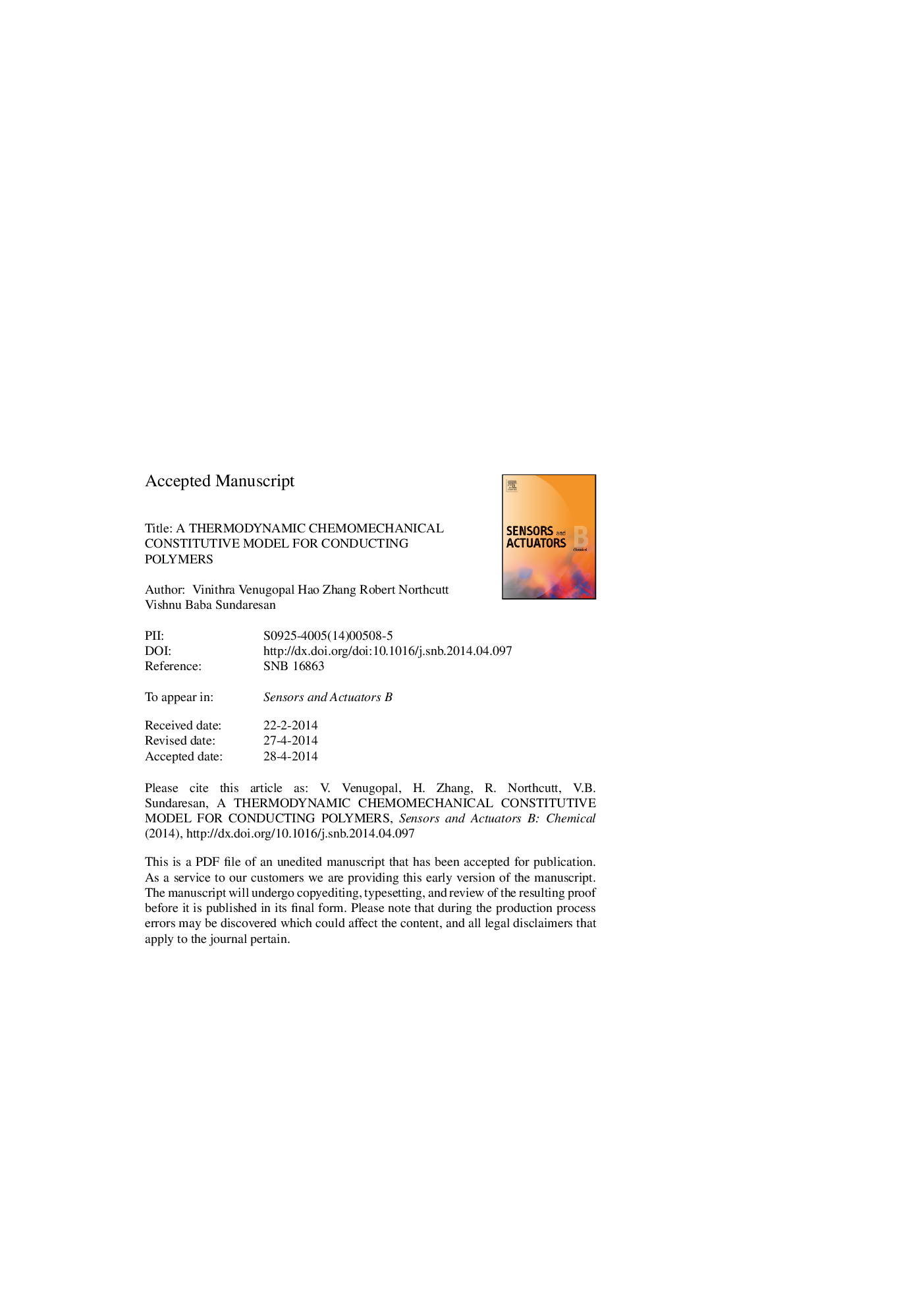| کد مقاله | کد نشریه | سال انتشار | مقاله انگلیسی | نسخه تمام متن |
|---|---|---|---|---|
| 7146702 | 1462089 | 2014 | 15 صفحه PDF | دانلود رایگان |
عنوان انگلیسی مقاله ISI
A thermodynamic chemomechanical constitutive model for conducting polymers
ترجمه فارسی عنوان
یک مدل سازنده شیمیایی ترمودینامیک برای انجام پلیمرها
دانلود مقاله + سفارش ترجمه
دانلود مقاله ISI انگلیسی
رایگان برای ایرانیان
موضوعات مرتبط
مهندسی و علوم پایه
شیمی
شیمی آنالیزی یا شیمی تجزیه
چکیده انگلیسی
Conducting polymers undergo volumetric expansion through redox-mediated ion exchange with an electrolyte under an applied electrical field. The resulting ion transport processes control the conformational relaxation of the polymer backbone and regulate the generated stress and strain. In this paper, a constitutive model has been developed from first principles to examine coupled chemomechanical response for a polypyrrole-based conducting polymer actuator. The mechanics of charge ingress and egress is used to compute chemomechanical coupling coefficient of a polypyrrole doped with dodecylbenzene sulfonate (PPy(DBS)) cantilever actuator and the resulting values are compared with experimental data over a range of sodium chloride (NaCl) electrolyte concentrations from 1Â mM to 1Â M. The model predicts concentration dependent strain and chemomechanical coupling coefficient for the actuator and it is observed that the strain generated by the actuator saturates above a certain value of cation concentration in the electrolyte. The maximum strain developed by the conducting polymer is found to be dependent on the volume of the PPy(DBS) layer and it is estimated that the chemomechanical coupling coefficient varies between 0.016 and 0.023Â dm3/mole as a function of electrolyte concentration (0.001 to 1Â M). A mechanistic approach to interpret the results from the model and experiments is proposed and correlations between structure (number of redox sites in the polymer, packing density), input (electrolyte concentration, electrical potential), output (strain) and constitutive relation (chemomechanical coupling coefficient) are derived.
ناشر
Database: Elsevier - ScienceDirect (ساینس دایرکت)
Journal: Sensors and Actuators B: Chemical - Volume 201, 1 October 2014, Pages 293-299
Journal: Sensors and Actuators B: Chemical - Volume 201, 1 October 2014, Pages 293-299
نویسندگان
Vinithra Venugopal, Hao Zhang, Robert Northcutt, Vishnu Baba Sundaresan,
